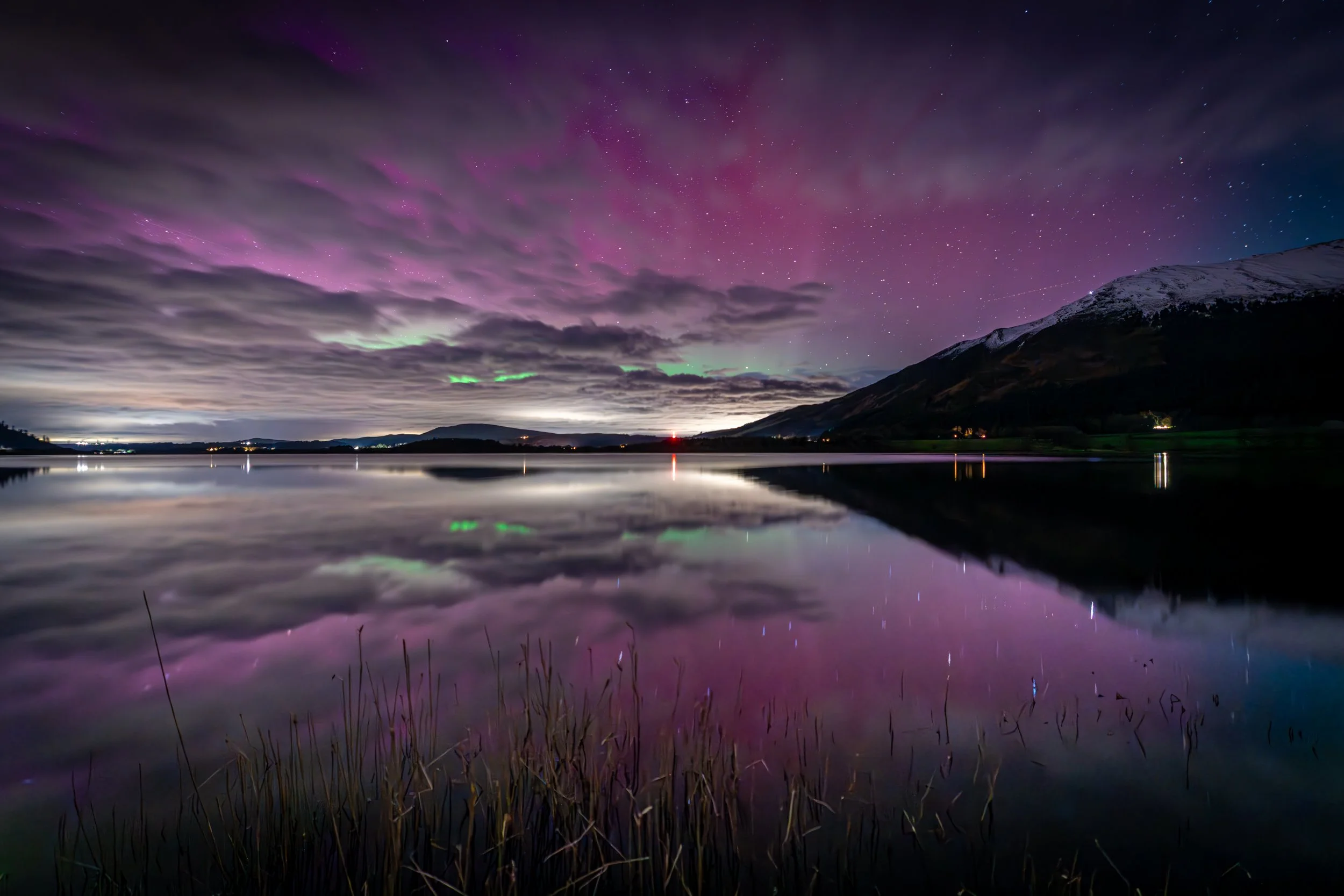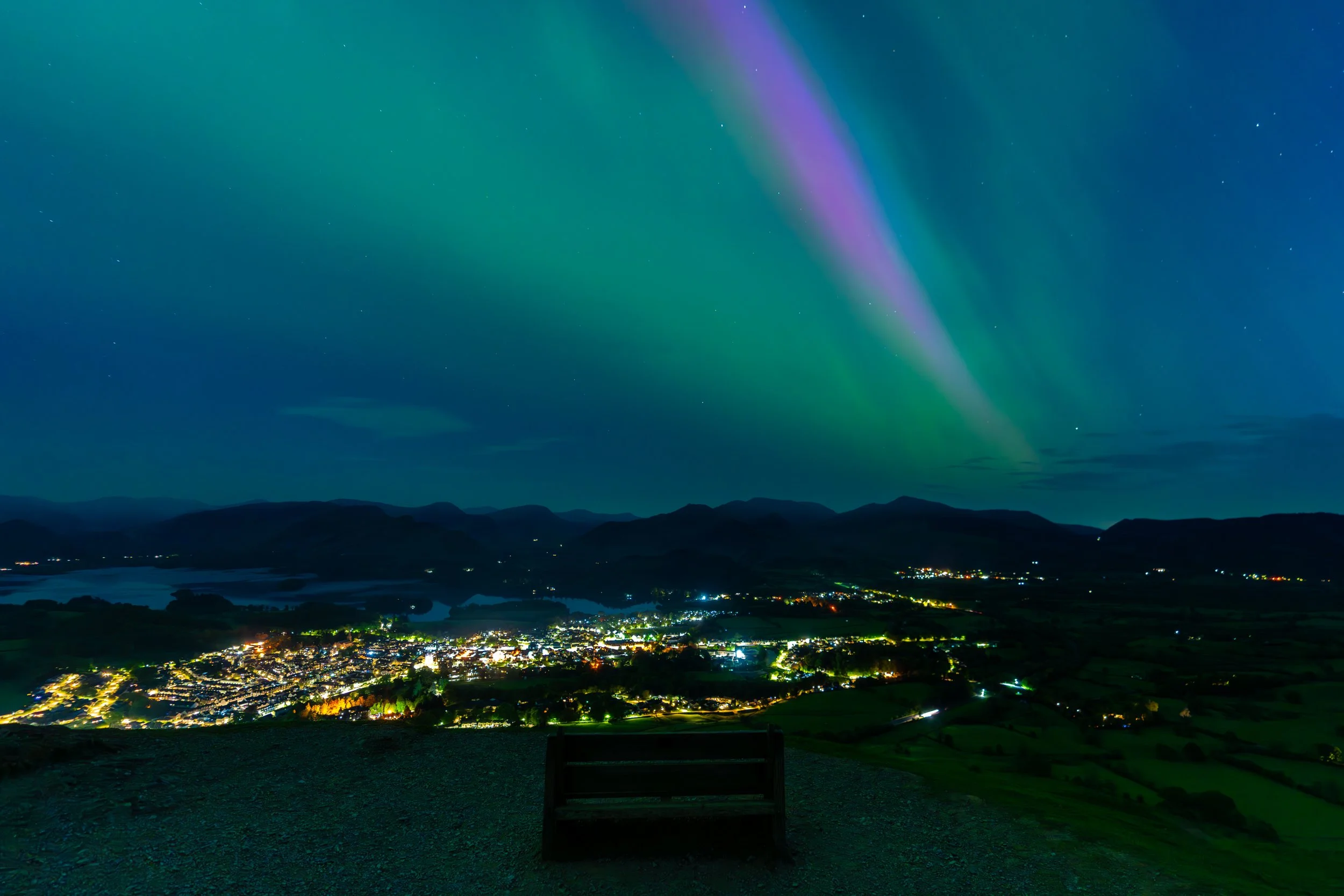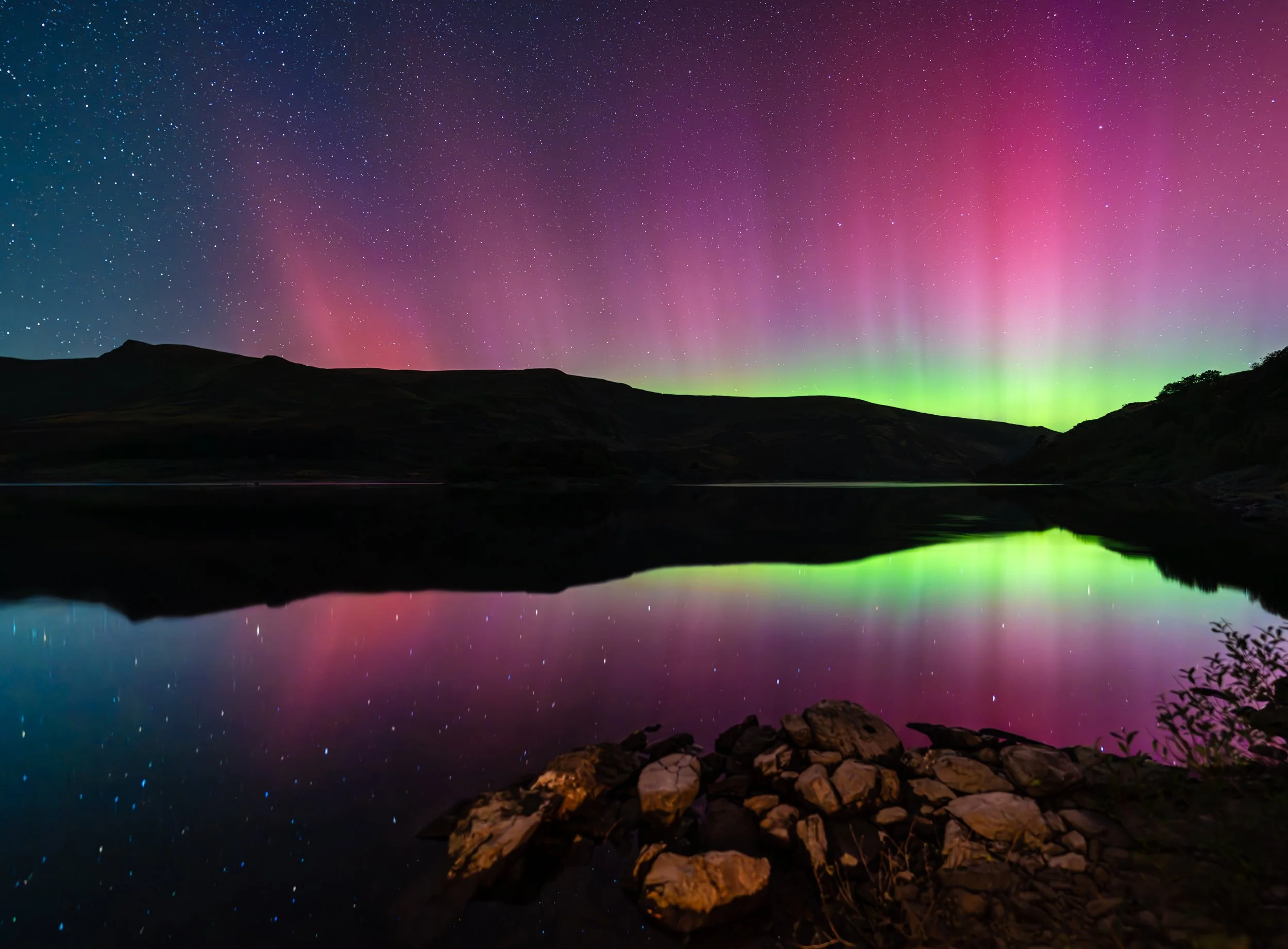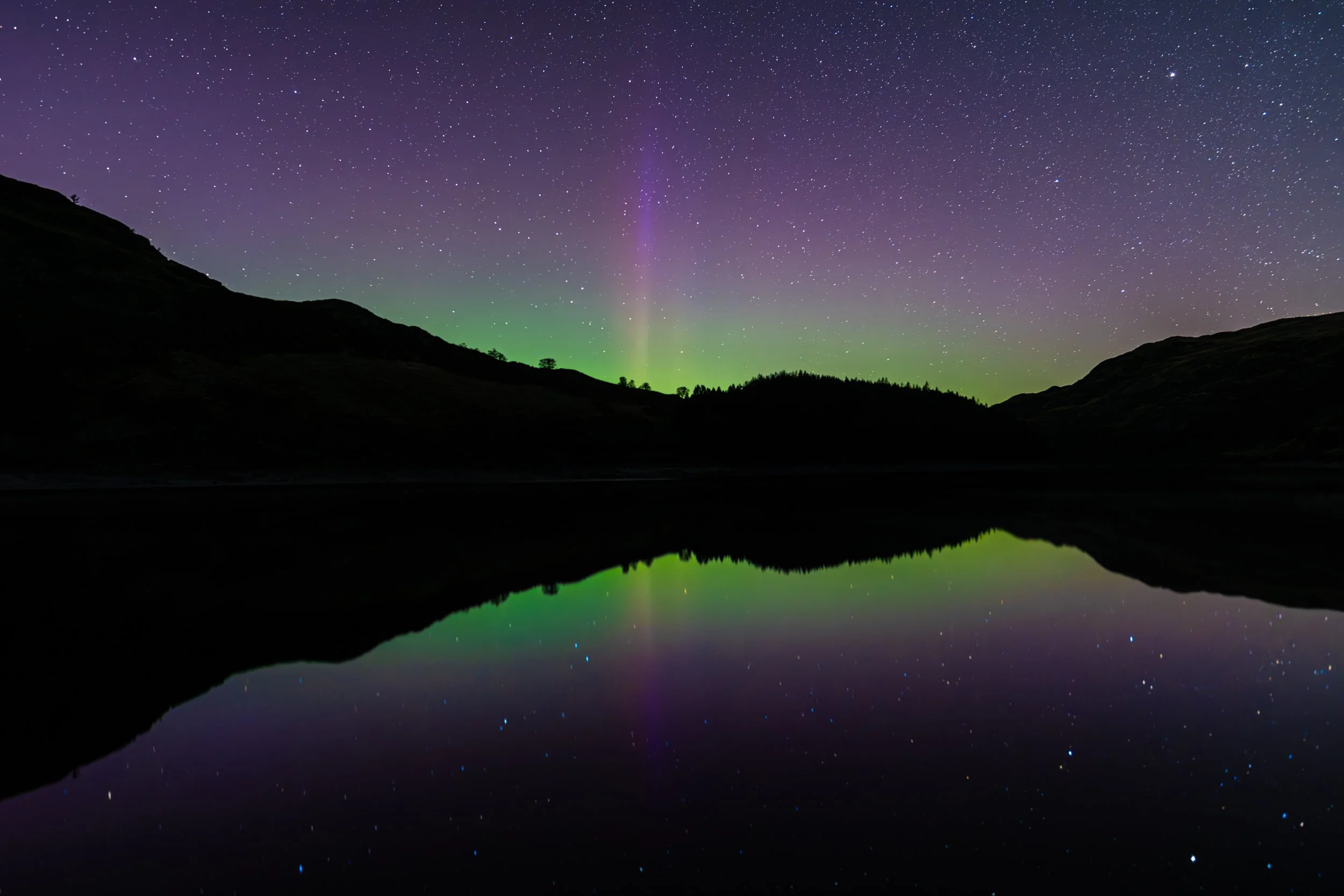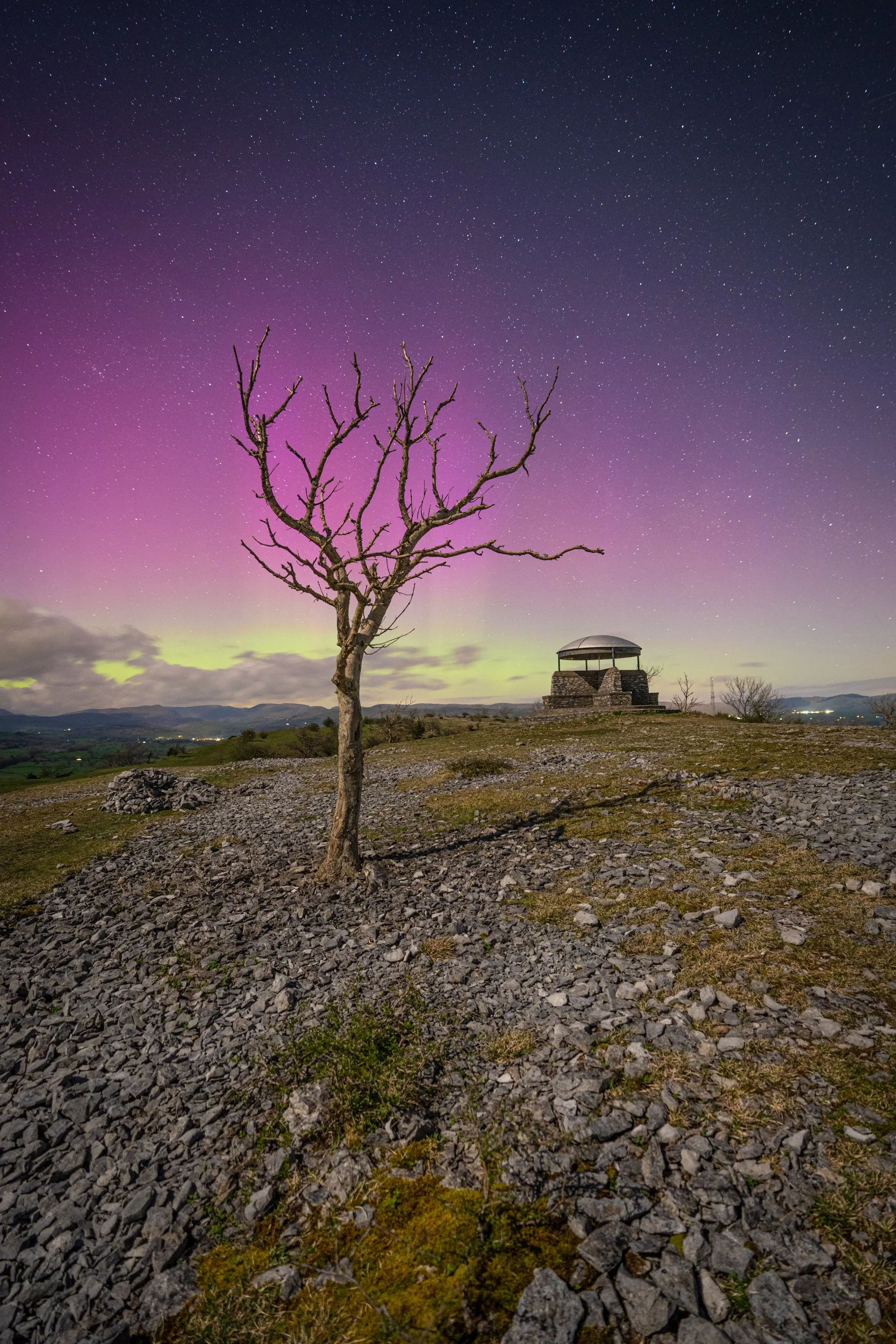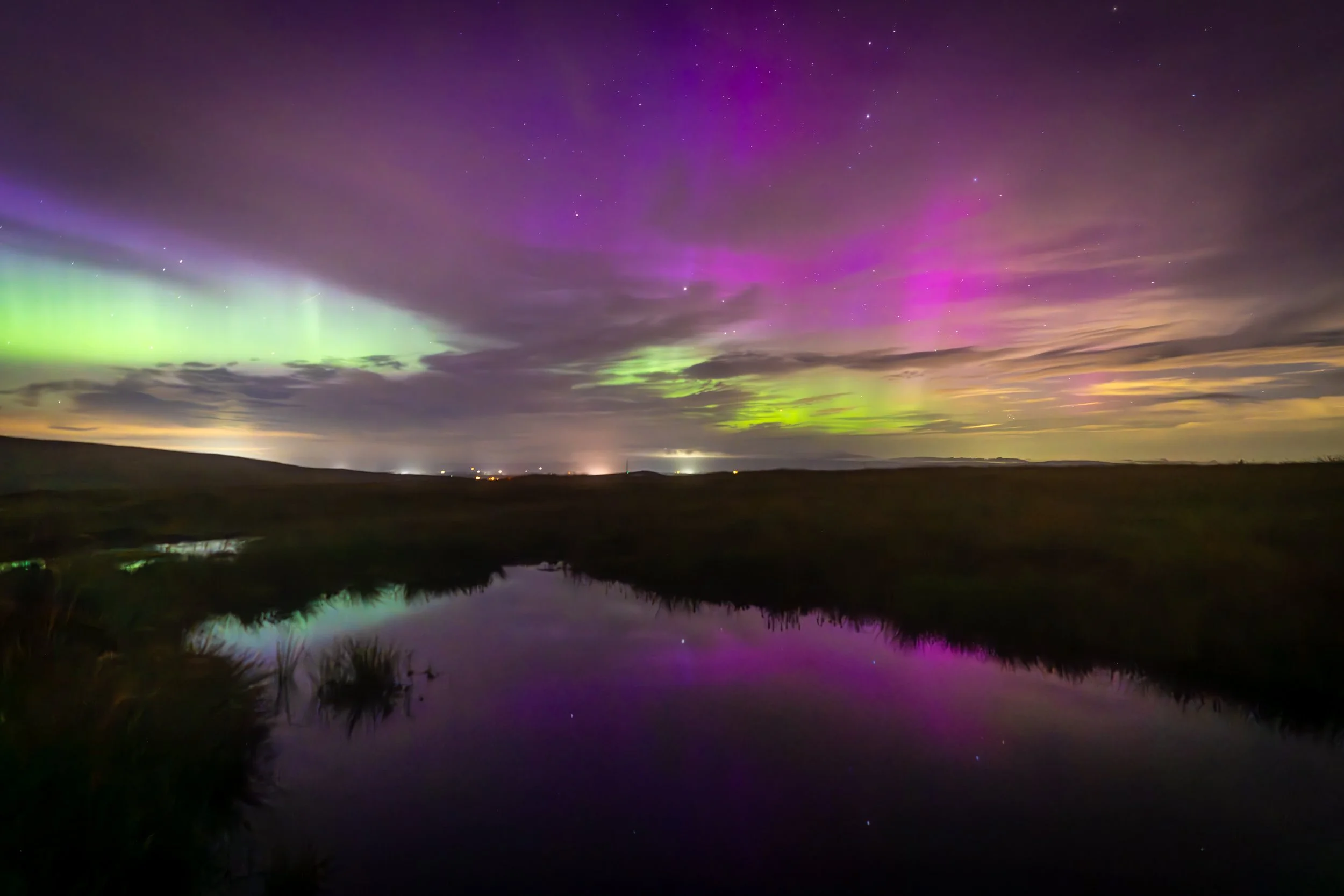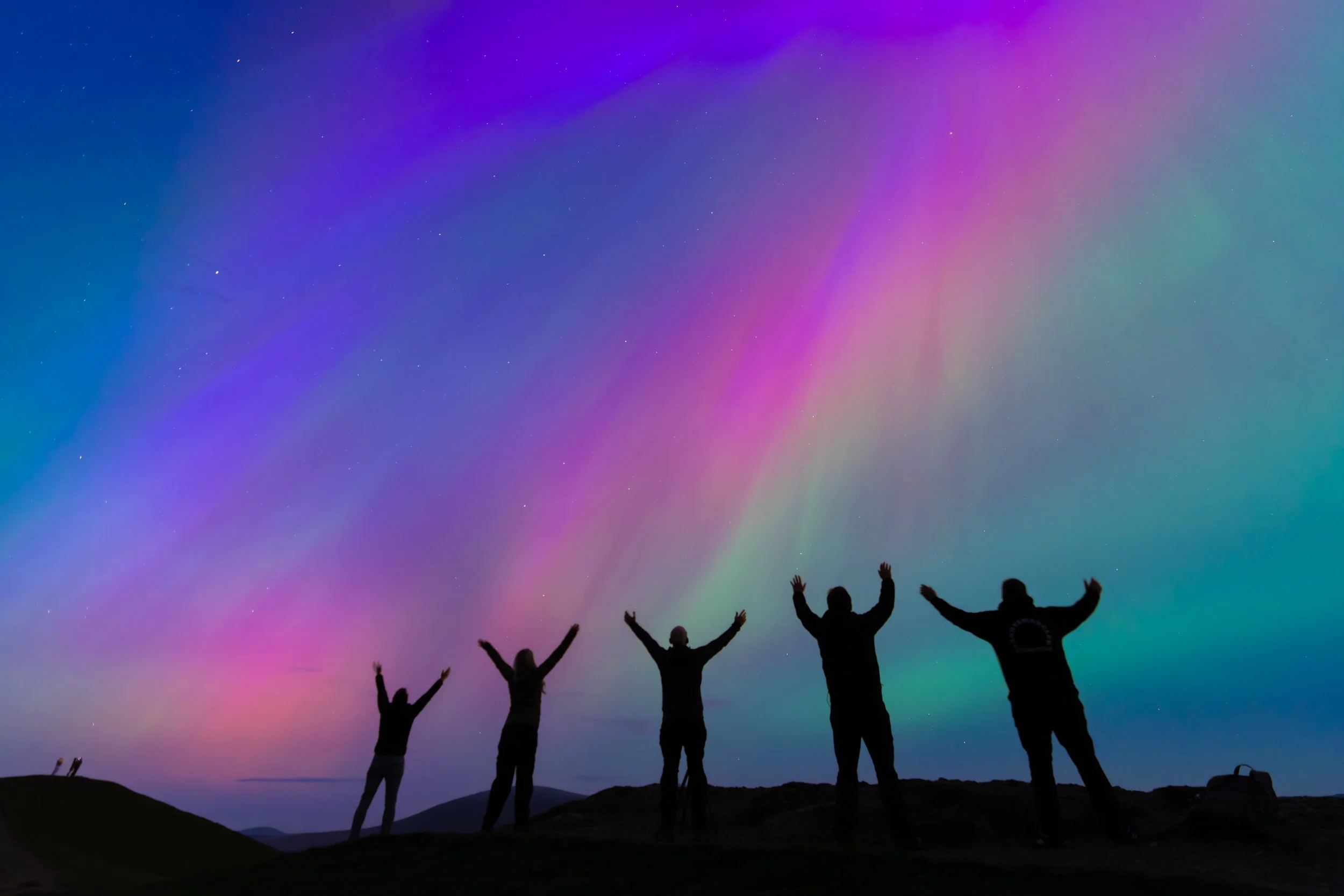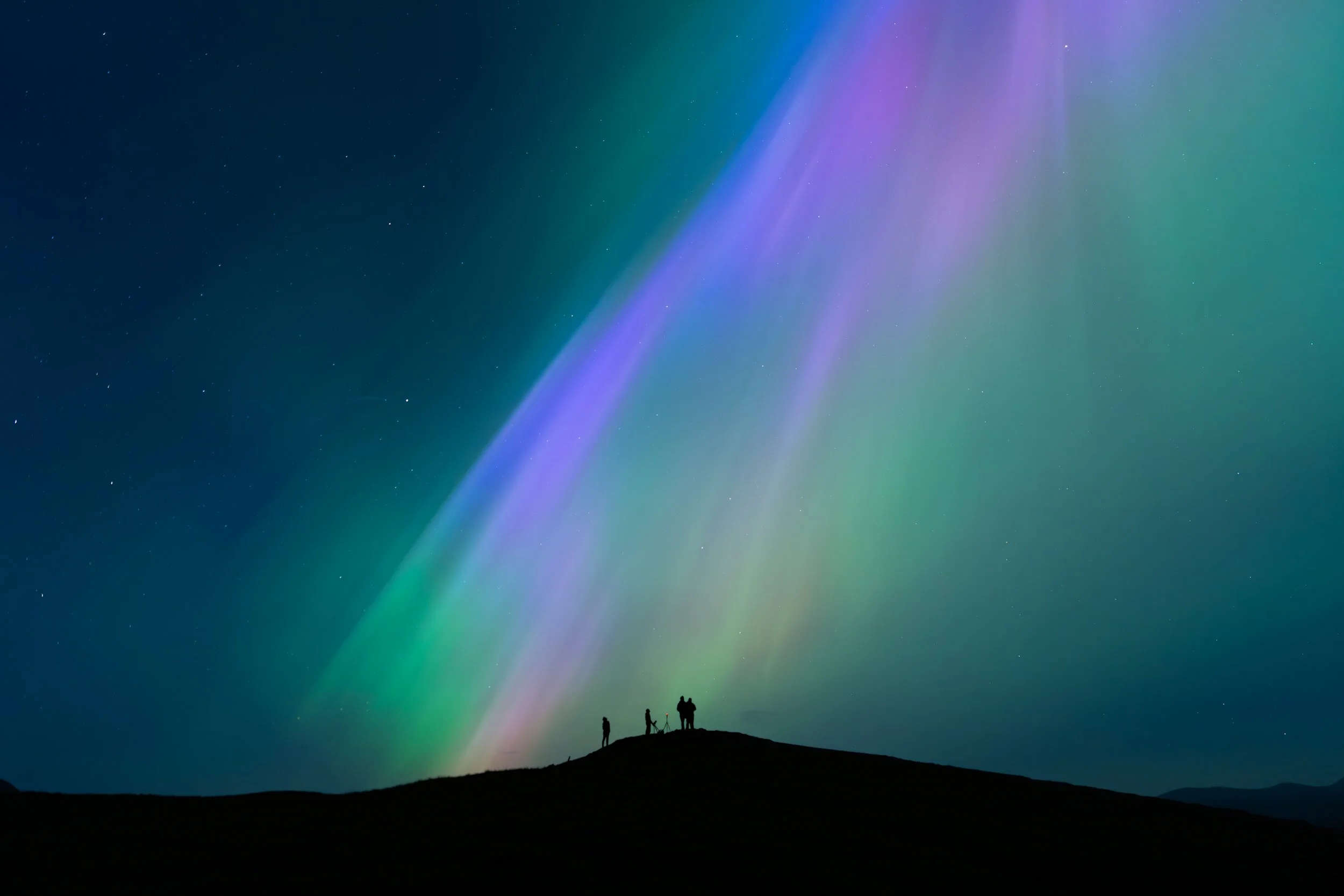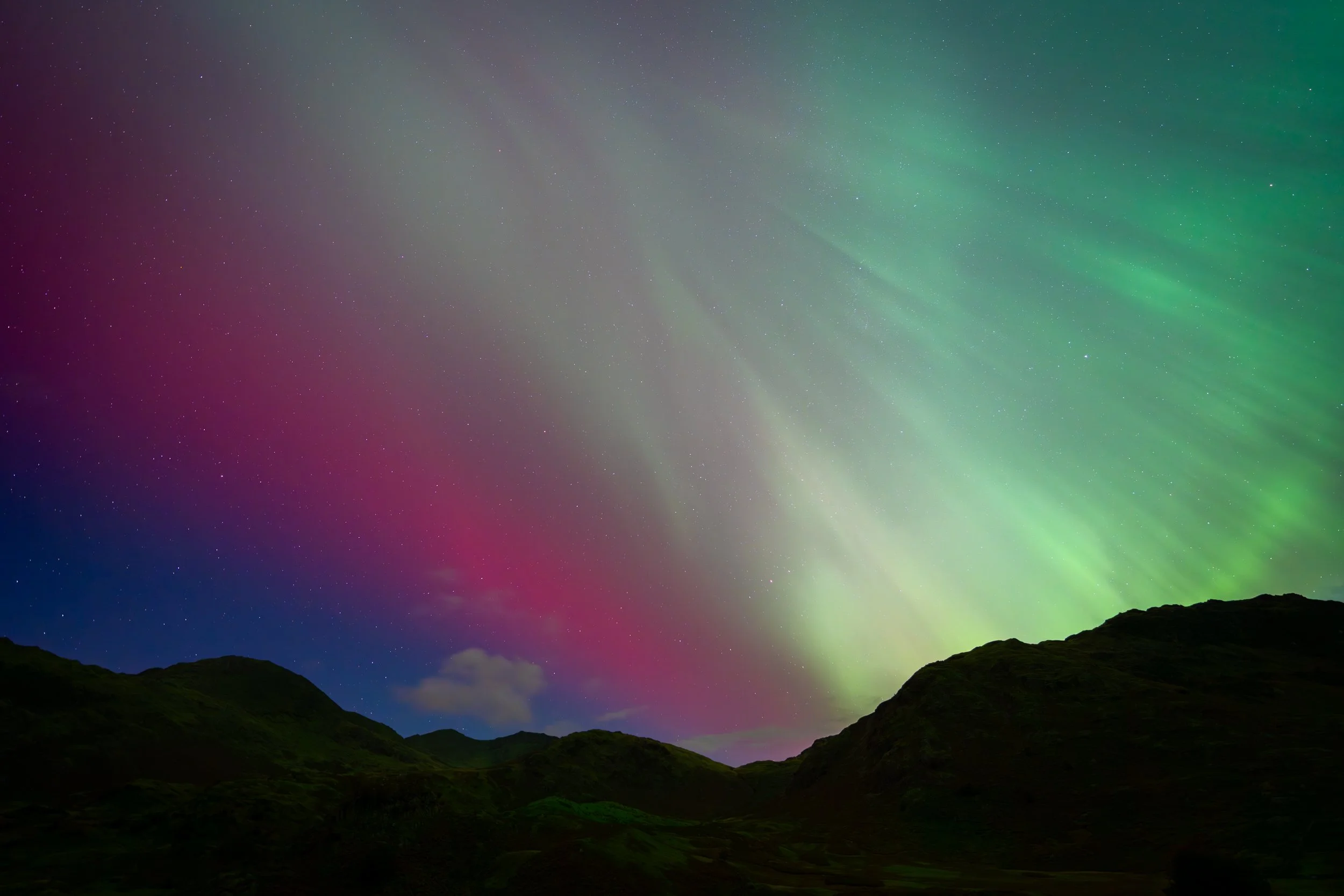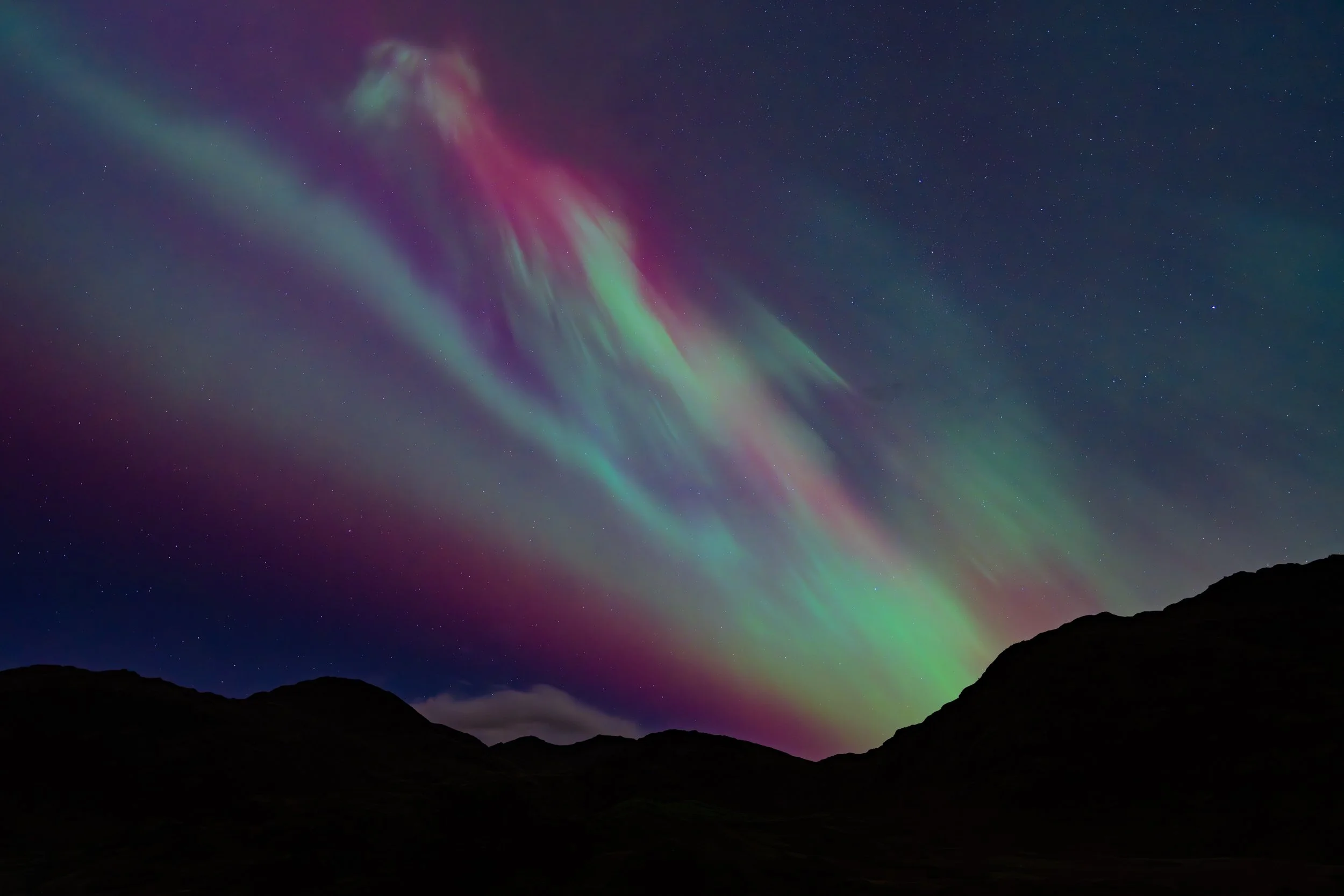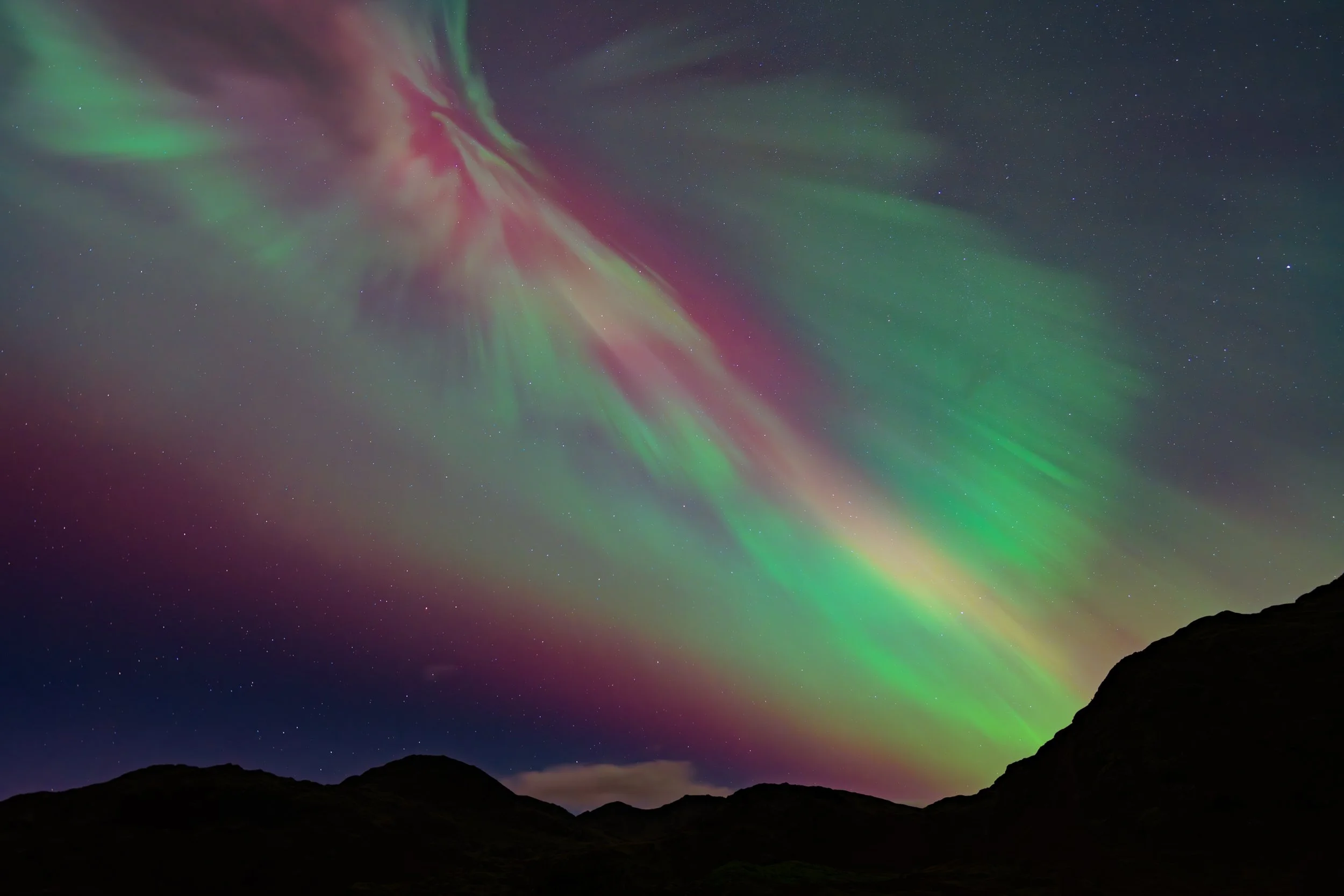
Aurora in Cumbria
Better any firework show - aurora chasing across Cumbria
Chasing the Aurora in Cumbria: A Photographer’s Guide
The northern lights, or aurora borealis, are a breathtaking natural phenomenon that captures the imagination of photographers and adventurers alike. While traditionally associated with places like Norway, Iceland, and northern Scotland, Cumbria’s dark skies offer a surprising yet rewarding opportunity for aurora chasers. Here’s how you can capture this celestial marvel in the Lake District.
Understanding the Aurora
The aurora occurs when charged particles from the sun collide with Earth’s atmosphere, creating stunning displays of light. The strength of the aurora is measured by the KP index, which ranges from 0 to 9. For Cumbria, you’ll typically need a KP index of 4 or higher for a good chance of seeing the northern lights. There are some key apps to download and groups to join in order to help with understanding the aurora. Firstly, download the Glenndale App, either mobile or desktop version Andy Stables gives very good explanations as to what each section is. Don’t be put off by it but stick with it. Another good facebook group to join is by far the best is Northern Lights UK - led by Glenn Wheatley - Glenn uses the snot analogy to explain the solar flares and explain the aurora is like the sun sneezing to earth. It is very informative and understandable to novices and professionals alike. If you’re staying in Cumbria do check out Cumbria Aurora group who will give you a warning to get outside.
As well as these apps you also need to consider where you are going is actually going to be dark and crowded with lights. Click here to find out the best dark site locations. Before you step out the door, you need to ensure that its going to be clear and there are no clouds or little clouds - make sure you check the Met Office cloud map. Remember its going to be dark so get yourself a good headtorch with a red light so you’re not blinding every photographer you come in contact with!
Best Locations in Cumbria for Aurora Spotting
Grizedale Forest Nestled between Coniston Water and Windermere, Grizedale Forest offers elevated vantage points and minimal light pollution. It is also a dark sky site.
Catbells This popular fell near Keswick provides expansive views toward the northern horizon, ideal for aurora photography.
Shap Fell Located on the A6, Shap Fell is one of Cumbria’s highest road passes, providing wide-open skies. Be wary though although this is a good vantage point there’s little in the way of foreground interest. In addition Shap quarry when operating in the dark is very bright and can blow out your photos.
Walney Island For a coastal perspective, Walney Island near Barrow-in-Furness offers unobstructed views over the Irish Sea.
West Coast Many say West is Best and has a number of good locations including harbours and monuments etc. Often when Cumbria is in cloud the west is clear.
Ashness Jetty There are many locations around Derwentwater that are very special and here is no exception - if clear and the water is like a pond - you can achieve some stunning shots.
Blea Tarn is an amazing place to capture the aurora and even the milky way. I’ve seen shooting stars and lay under stars just in amazement! Be warned though there is no mobile phone signal in this location. Also note getting there in winter can be very very dicy and often the roads are closed getting up to the tarn. Don’t chance it!
Castlerigg Stone Circle - its a favourite for photographers but its not my favourite as it can be too busy and can be annoying if you’re trying to get a shot with children running around with torches etc. Great when its quiet but avoid when its busy.
Bassenthwaite Lake offers a good view point looking north and has laybys off the A66 and is a short walk to the shore line.
Ullswater - as like with Derwentwater - there are a number of places if you’re prepared to hike or if not by the shoreline facing north.
Essential Gear for Aurora Photography
Camera: A DSLR or mirrorless camera with manual controls.
Lens: A wide-angle lens with a fast aperture (f/2.8 or wider) to capture as much light as possible. I shoot with a Sony 14GM 1.8 lens and its brilliant.
Tripod: Vital for long-exposure shots to keep your camera steady.
Remote Shutter Release: Helps to minimise camera shake or timed shot
Headlamp with Red Light Mode: Preserves your night vision while adjusting settings.
Camera Settings for Capturing the Aurora
Mode: Manual (M)
ISO: Start with ISO 1600 and adjust as needed.
Aperture: Set your lens to its widest aperture ( the lowest number on your camera )
Shutter Speed: Between 5 to 15 seconds, depending on aurora activity.
Focus: Switch to manual focus and set it to infinity and focused on a star.
FEATURED ARTICLES / PHOTOS - BBC
Derwentwater from above
Aurora from Bassenthwaite Lake in March 2024 when the clouds cleared and we could see a Aurora Arc later that night
Tips for a Successful Shoot
Check the Forecast Use aurora forecast apps like My Aurora Forecast or SpaceWeatherLive to monitor KP index and cloud cover.
Arrive Early Scout your location during daylight to find the best composition and avoid hazards.
Dress Warmly Cumbria’s nights can be bitterly cold, so layer up with thermal clothing, hats, and gloves.
Experiment with Compositions Incorporate foreground elements like trees, rocks, or lakes to add depth and context to your shots.
Stay Patient and Persistent The aurora can be elusive, so don’t be discouraged if your first attempt doesn’t yield results. Persistence pays off.
Post-Processing Tips
Once you’ve captured your aurora shots, use software like Lightroom or Photoshop to enhance the colors and bring out the details. Adjust the white balance to a cooler tone, and play with the contrast and clarity to make the aurora pop.
Final Thoughts
Chasing the aurora in Cumbria is a rewarding adventure that combines the thrill of discovery with the art of photography. With a bit of preparation and a lot of patience, you can create stunning images that showcase the natural beauty of this region. So grab your camera, check the forecast, and head out under Cumbria’s dark skies—the northern lights await!
Oh and if you want to come on a workshop with me - please send me a message and I can give you a quote!


